
Transcription
BOARD OF PAROLE HEARINGS
PROPOSED PAROLE CONSIDERATION DECISION
STATE OF CALIFORNIA
DECISION - INITIAL HEARING
[X] Parole Granted - (Yes)
[ ]CDCR: Do not release inmate before Governor's review. [ [ ]Parole Denied - (No) Year(s) Inmate Signed Stipulation of Unsuitability for _Year(s)
[ ]Inmate Signed Voluntary Waiver for Year(s)
[ ]Split Decision
[ ]Term Calculation Only -
[ ]Continue __ Month(s)
[ ] Hearing Postponed
Length: __ Month(s)
Reason(s):
PANEL RECOMMENDATIONS
The Board Recommends:
No more 115's or 128A's
Work to reduce custody level
[X] Stay discipline free
[X] Earn positive chronos
[ ]Recommend transfer to
[ ]Other
As Available
[X] Get self-help
[ ]Learn a trade
[ ]Get therapy
[ ]Get a GED
HEARING PANEL
ANDERSON, JR. ARTHUR - Commissioner Date: 12/12/2019
GROTTKAU, MICHAEL - Deputy Commissioner Date: 12/12/2019
This form and the Board's decision at the hearing is only proposed and NOT FINAL. It will not become final until it is reviewed
CDC #: P68859
NAME: HUTCHINSON BPH 1001
INST: SQ
SCHEDULED DATE: 12/12/2019
ACTION DATE: 12/12/2019
Page 1 of 2
STATE OF CALIFORNIA
BOARD OF PAROLE HEARINGS PROPOSED PAROLE CONSIDERATION DECISION
BPH INVESTIGATION REQUESTS
No Requests
HEARING COMMENTS
No Comments
HEARING OBJECTIONS
No Objections
This form and the Board's decision at the hearing is only proposed and NOT FINAL. It will not become final until it is reviewed.
CDC # : P68859
INST: SQ
NAME: HUTCHINSON BP 1001
SCHEDULED DATE: 12/12/2019
ACTION DATE: 12/12/2019
Page 2 of 2
Parole Hearing Documents
Edwin Hutchinson (P68859)
San Quentin State Prison
December 12, 2019
Milena N. Blake
Three Strikes Project
Stanford Law School
559 Nathan Abbott Way
Stanford, CA 94305
Tel: (650) 736-7757
milenab@law.stanford.edu
Parole Hrg Submission by Edwin Hutchinson, P68859
1/168
TABLE OF CONTENTS
I. Summary of Suitability for Parole
II. CDCR Recommendation for Release Based on Extraordinary Rehabilitation
III. Vocational and Educational Summary
IV. Statement of Insight
V. Relapse Prevention Plan and Success Plan
VI. Letters of Remorse
VII. Reentry Plan
Parole Hrg Submission by Edwin Hutchinson. P68859
SUMMARY OF SUITABILITY FOR PAROLE
Parole Hrg Submission by Edwin Hutchinson, P68859 3/168
INTRODUCTION
Edwin Hutchinson' comes before the Board having served over 20 years in prison, following his conviction for second degree robbery in 1999 in Los Angeles County for which he was sentenced to 30 years-to-life under the Three Strikes Law.
As discussed in detail below, according to CDCR Secretary Ralph Diaz and numerous other CDCR corrections officers, Mr. Hutchinson is not only suitable for parole, he would be an asset to his community.
In addition to meeting all the factors favoring release under Cal. Code Regs. Tit. 15.
2281(c) and (d), Mr. Hutchison's suitability for release is demonstrated by the following:
• CDCR forensic psychologist, Todd McManus, concludes that Mr. Hutchinson is LOW RISK for violence
On September 6, 2019, Dr. McManus conducted an interview and evaluation of Mr. Hutchinson to assess his risk of danger to the community if released. Dr. McManus concluded that, in light of his exceptional disciplinary record, vocational achievements, and demonstrated insight and remorse, that Mr. Hutchinson is a LOW RISK of danger to society. Dr. McManus noted:
During his incarceration, it appears that he has been able to maintain sobriety... Mr. Hutchinson presented a written and oral relapse prevention plan that appeared to be well developed. He expressed a realistic attitude about the efforts needed to main his sobriety in to community. He showed insight into his personalized triggers for use. He share many steps he takes and plans to continue to take to maintain his sobriety.
Mr. Hutchinson has upgraded himself in many ways during his incarceration. He has consistently participated in correspondence college courses since at least 2009. and was able to achieve an Associates' degree in 2017. He has participated in many vocational programs, including PIA Computer Code in 2017, PIA Upholstery from 2007-2012.
In some documents, the inmate's last name is spelled "Hutchison."
Parole Hrg Submission by Edwin Hutchinson, P68859 4/168
Vocational Preparation in 2003, and two months of Auto Body training in 2001... multiple officers, supervisors, and facilitators have written laudatory chronos which have attested to his responsible conduct. In addition, it should be noted that a chrono dated 8/1/12 documented that he saved the life of an inmate who had passed out and was about to fall from the tier.
Mr. Hutchinson has maintained a commendable level of participation in self-help groups for most of his incarceration.
Mr. Hutchinson's parole plans appear feasible... He showed the undersigned multiple planning documents he has crated which illustrated a great deal of thought into the obstacles he could face and resources to handle such.
Many support letters have been written for him from supervisors, officers, facilitators, and instructors, which have included offers of continued support and access to program resources.
• CDCR Secretary Ralph Diaz recommended that Mr. Hutchinson be released because he is fully rehabilitated, would be a "positive asset to the community," and his continued incarceration in not in the interest of justice.
CDCR Secretary Ralph Diaz personally recommended that Mr. Hutchinson be given relief under Penal Code section 1170(d)(1) and released due to his extraordinary rehabilitation while in prison. Before Secretary Diaz could make this recommendation, the Board of Parole
Hearings was required to review Mr. Hutchinson's entire prison file, as well as his criminal history, and conduct a notification of victims, and a full public safety review. See Penal Code section 1170(d)(): Cal. Code Regs. tit. 15. S S 3076.2. 3076.2(e)(2).
Mr. Hutchinson was one of the very first inmates to receive Secretary Diaz's recommendation under the program instated by former Governor Jerry Brown to reward prisoners with such exceptional records of proven, in-prison. The program includes amendments to Penal Code section 1170(d)(1) enacted in the Public Safety Omnibus Act of 2018, Assembly Bill ("AB") 1812. Secretary Diaz's recommendation that Mr. Hutchinson be released was based
on multiple layers of CDCR review.
• Multiple corrections officers extoll Mr. Hutchinson's work ethic, integrity, commitment to rehabilitation, leadership, good example to other inmates, and preparation for release.
Multiple CDCR prison officers who know Mr. Hutchinson personally, interact with him daily, and who have no incentive to support his case, attest to Mr. Hutchinson's reformed character and suitability for release. Correctional officers extoll Mr. Hutchinson's work ethic,
integrity, commitment to rehabilitation, leadership, good example to other inmates, and preparation for release. For example, Correctional Officer C.T. Smith says Mr. Hutchinson "has addressed his past criminal behavior, and substance abuse issues, and is fully prepared to
successfully transition back into his community as a positive and productive member of society," and that he believes that Mr. Hutchinson ''is no longer a threat to society and fully endorse[s] the release of inmate Hutchison." Correctional Officer R. Luna says that Mr. Hutchinson "has proven to be truly the type of inmate the department is trying to produce and release into our
society" and Correctional Officer K. Davis recommends Mr. Hutchinson for release and would be happy to have him as a neighbor." Mr. Hutchinson has received over 80 commendations ("chronos") from prison staff, volunteers and administrators for participation in and completion of rehabilitative programs including victim awareness, positive decision-making, and alternatives to violence.
• Mr. Hutchinson has received only two Serious Rules Violation Reports during his 20 years of incarceration and has maintained the lowest possible Classification Score (19) for over 10 years. Mr. Hutchinson has an excellent prison disciplinary record. He has received only two minor Rules Violation Reports, one for performance in 2005 and one for misuse of a government computer in 2009. Both were in the least serious divisions, division F and E respectively. His exceptional behavior is reflected in his security Classification Score, CDCR's system-wide measure of prisoner behavior. Mr. Hutchinson has the lowest and best possible security classification score for an inmate serving a life sentence. His Classification Score would be zero but for a mandatory minimum score of 19, based on CDCR's categorization of life-inmates.
According to California case law, Mr. Hutchinson's score reflects a "very low security risk. In re Stoneroad, 215 Cal. App. 4th 596, 605 (2013). Notably, Mr. Hutchinson has never received a write-up for refusing a drug or alcohol test, nor has he ever tested positive for drugs or alcohol, despite CDCR's random testing policy. See Cal. Code Regs. tit. 15. $ 3290(c)-(e).
• Mr. Hutchinson has the best possible score on the California Static Risk Assessment (CSRA),
Mr. Hutchinson has the best-possible score on the California Static Risk Assessment (CSRA) protocol, which was developed by CDCR and the University of California and calibrates 22 objective criminogenic risk factors, including criminal history and past performance on
parole.
• Mr. Hutchinson's age (59) places him in one of the lowest possible risk categories for recidivism.
Mr. Hutchinson's recidivism risk is dramatically reduced by his current age (58 years old) according to CDCR regulations, empirical studies, and California case law. See, e.g. Weisberg et. al., Stanford Criminal Justice Center, “Life in Limbo: An Examination of Parole Release for Prisoners Serving Life Sentences Without the Possibility of Parole in California (Sept. 2011).
Parole Hig Submission by Edwin Hutchinson P68859 7/168
• Mr. Hutchinson has a strong network of support
Mr. Hutchinson has made significant efforts to maintain and grow his network of support. He has strong family support from his brother and sister and numerous community members who not only support his release but have pledged their support once he is released.
• Mr. Hutchinson has a comprehensive and secure reentry plan, which includes substance use disorder rehabilitation and vocational programming.
Mr. Hutchinson has reached out and has been accepted to a number of residential reentry program both in the Bay Area and the Los Angeles Area. He has acceptance letters from The Golden Path, Options Recovery Services and Amity Foundation, among others.
1. CDCR RECOMMENDED THAT MR. HUTCHINSON BE RELEASED UNDER PENAL CODE SECTION 1170(D) DUE TO HIS EXCEPTIONAL DISCIPLINARY RECORD AND REHABILITATION.
Mr. Hutchinson's entire criminal history, prison file, and vocational and rehabilitative efforts have already undergone intense and thorough scrutiny by multiple officials at CDCR and the Board of Parole Hearings, and all have concurred that he is not only suitable for release, but that he would be a positive asset to his community.
On September 26, 2018, Secretary Ralph Diaz issued a letter recommending that Mr. Hutchinson be resentenced under 1170(d). A strict and rigorous set of regulations govern CDCR's process for evaluating and issuing recall recommendations under Penal Code section 1170(d)(1). Ultimately, the Secretary must review the inmate's entire prison file, case history, criminal record, potential impact on public safety and on any victims, and may issue a recommendation for a new sentence only upon concluding that:
It is evident from the inmate's exceptional behavior that is so extraordinary beyond simply complying with all regulations and procedures during incarceration that they have changed as a person and would be a positive asset to the community. [And/or] circumstances have changed to the extent that the inmate's continued incarceration is not in the interest of justice.
Cal. Code Regs. tit. 15. § 3076(a): see also Dix, 53 Cal. 3d at 460 (noting CDCR regulations regarding sentence recall and emphasizing that CDCR's implementation of its statutory authority is entitled to great deference.") The controlling regulations require four layers of administrative review and consideration within CDCR before the Secretary may issue a recall recommendation. Cal. Code Regs. tit. 15, S 3076.2. Prison officials "shall consider the following factors in making any recall evaluation:
(1) the inmate's commitment offense: (2) whether the inmate has any history with any known prison gang or street gang; (3) whether the inmate's criminal history includes crimes of violence or registerable sex offenses: (4) whether any victim may suffer fear if the inmate is released; (5) whether the inmate's prison disciplinary includes a history of violence, force, assault, or arson;
and (6) whether the inmate committed any other criminal acts that would indicate that he or she would be a threat to public safety if released. Cal. Code Regs. tit. 15. § 3076.1. The evaluation must include the inmate's entire criminal and juvenile record, prison disciplinary history,
probation report at the time of the commitment offense, and notice to victims. Cal. Code Regs.
tit. 15. § 3076.2(b)(2).
CDCR's review is initially conducted by a prison caseworker. Id. The inmate's file and recall evaluation are then reviewed and considered by the institution's Classification and Parole Representative ("C&PR"). Id. $ 3076.2(c). The C&PR then forwards the evaluation to the warden or chief deputy warden where the inmate is currently housed for his or her review and consideration. Id. $ 3076.2(d). The warden or chief deputy warden then forwards the evaluation to the CDCR Secretary for his or her review. or the review by the Secretary's designee. Id. § 3076.2(e). Finally, if the inmate is serving an indeterminate sentence, as here, the determination of the Secretary must then be referred to the Board of Parole Hearings for further review and consideration. Id. § 3076.2(e)(2)
In the end, the Secretary may only issue the sentence recall recommendation if the inmate's "exceptional behavior evidence that he or she has "changed as a person" and, if released, “would be a positive asset to the community." Cal. Code Regs. tit. 15. § 3076(a).
CDCR's Department Operations Manual ("DOM") reflects a similar process. Ultimately, the DOM provides that the Secretary may only recommend a recall of sentence to the court when, as relevant here, "[t]he inmate has so changed as a person through their own efforts since
being sentenced, that they would be a positive asset to the community." Cal. Dept. Corr. & Rehab., Dept. Operations Manual § 62020.6 (2018).
II. CDCR STAFF AT ALL LEVELS OF SENIORITY PRAISE MR. HUTCHINSON'S REHABILITATION, REMORSE, AND BEHAVIOR, AND ATTEST TO HIS SUITABILITY FOR RELEASE.
Officers at all levels of CDCR seniority who, arguably, know Mr. Hutchinson best,
understand the challenges and dynamics of prison life and culture, and have zero incentive to support his release attest that Mr. Hutchinson exemplifies the rehabilitative and reformative mission of CDCR and that he is genuinely remorseful for his crimes.
Below are excerpts from the letters and laudatory chronos of support from CDCR officers:
T. Marez, Correctional Officer, San Quentin State Prison: "Hutchinson is very respectful and follows all the rules in the SUDT-SAP program. He is a mentor in the LTOP class
and is a positive role model on other inmates in the program. Hutchinson has share with me a history of various other program that he participated in while in San Quentin. This exhibits his interest in self-improvement despite his circumstances. He has expressed remorse and regret for the crime that he committed and he has taken responsibility for his actions. He has red to me many job offered that are waiting for him when he paroles. He has taken the initiative to participate in programs to gain resources to reenter society. This shows me that he is trying to get himself on the right path for the future. Therefore Hutchinson is a good candidate for parole."
D. Kunes, Correctional Officer, San Quentin State Prison: "Mr. Hutchinson and I have had numerous conversations of his past, his crimes committed, and his potential future. He has shown me great remorse for the senseless crimes of his past, the traumatic suffering he has caused to his victims, and the time he has missed with his family due to the poor mistakes he has made... I believe Mr. Hutchinson would be a valuable resource to his community and make a
great candidate for parole."
R. Reyes, Correctional Officer, San Quentin State Prison: "Over the years inmate Hutchison has always been courteous, insightful and respectful toward me, other staff, and his fellow inmates. In our many discussions, he has expressed the importance of his education and how conductive this experience has been in preparing him in becoming a productive, responsible, and law-abiding citizen upon his release from prison. It is my opinion that inmate Hutchison has the necessary life sustaining ability and education to be successful, as well as the perseverance, ambition, and initiative which will help guard him against any possibility of recidivism... It is commendable to see such a transformation in a prisoner and inmate Hutchison's improved self-worth and hope for the future is outstanding."
C.T. Smith, Correctional Officer, San Quentin State Prison: "During our many conversations, he has often expressed and displayed evidence of his sincere remorse for committing the instate offense of second-degree robbery in 1999... In addition, it must be noted That inmate Hutchison in known as a "peacemaker" to the other inmates at CSP-San Quentin and has the respect of the CDCR prison staff, as well. Based upon my personal observations, conversations and interaction with inmate Hutchison. I am of the strong opinion and am inclined to believe that inmate Hutchison is no longer a threat to public safety. He has addressed his past criminal behavior, and substance abuse issues, and is fully prepared to successfully transition back into him community as a positive and productive member of society. Therefore, I fully endorse the release of inmate Hutchison..."
R. Luna, Correctional Lieutenant, San Quentin State Prison: "It is apparent that inmate Hutchinson has demonstrated a complete turnaround from his past behavioral shortfalls and has abandoned the criminal ideology that many inmate still abide by. Inmate Hutchinson had the courage rediscovered himself through a countless programs and self-help, finding the inner strength to regain his moral compass, and not allow other inmates to dictate his future... Inmate Hutchinson has proven to be truly the type of inmate the department is trying to produce and release into our society."
K. Davis, Correctional Officer, San Quentin State Prison: "It is my utmost belief that inmate Hutchison is not a threat to society in anyway, in fact, to the contrary, he would be a great benefit to any community upon his release from prison. It is my strong opinion that Mr. Hutchison has evolved and transformed into the type of individual who embraces out society and all the 'good' is has to offer, and I would have him as a neighbor."
E. Plagman, Correctional Officer, San Quentin State Prison: "It is my opinion that inmate Hutchison has taken accountability for his crimes and has acknowledged the harms that his past actions have caused. In my conversations with him, he constantly denounces criminal behavior and he sees crime as a breakdown of human relationships. He has also shared with me his commitment of giving back to the community and making amends for his past mistakes. As a 'CDCR" Correctional Officer, it is commendable to witness such a process of growth and
personal development that I have seem take place with inmate Hutchison. He possesses the knowledge and the ability to be a contributing member of society upon release."
III. MR. HUTCHINSON HAS THE BEST-POSSIBLE IN-PRISON SECURITY AND DISCIPLINARY DESIGNATIONS
Mr. Hutchinson officially began his current prison term on February 8, 2000. Since that time he has received only two minor Rules Violation Reports (RVR). One RVR Mr. Hutchinson received was in 2005 for "Performance" when he spoke back to a teacher. It was determined to be a division "F," the lowest possible division. The second RVR Mr. Hutchinson received was for misuse of a government computer, when some of his legal paperwork was found stored on a computer. It was determined to be a division "E," the second lowest possible division.
Mr. Hutchinson's exemplary record is reflected in his Classification Score, which is the lowest and best possible score for an inmate serving a life sentence. Mr. Hutchinson's CS is 19 and would be zero but for CDCR's mandatory minimum scoring system. Mr. Hutchinson achieved the minimum score in 2009 and has maintained it since. According to California law. an inmate sentenced to life with a CS of 19 "indicat[es] a very low security risk." In re Stoneroad, 215 Cal. App. 4th 596, 605 (2013). CDCR regulations provide that positive institutional behavior-reflected by a low cs—is a factor favoring suitability for release and reflects an enhanced ability to function within the law[.]" Cal. Code Regs. tit. 15 § 2281(d)09).
IV. MR. HUTCHINSON HAS AN EXCEPTIONAL HISTORY OF PARTICIPATION IN REHABILITATIVE AND VOCATIONAL PROGRAMMING IN PRISON
A. Mr. Hutchinson has a demonstrated record of consistent excellence in his vocational and educational pursuits.
Mr. Hutchinson has worked in various clerical roles during his commitment, earning exceptional and above-average ratings on his work supervisor reports, praise for his work ethic and attitude, and pay raises. One supervisor noted "Hutchinson has all the skills needed to be a
productive, beneficial, and responsible citizen upon release." He is repeatedly described as a "good worker" and is commended for doing "his best to please..." He also noted that Mr. Hutchinson has proven to be highly efficient and professional in the performance of his duties." Mr. Hutchinson's exemplary participation in prison vocational activities is a factor indicating
suitability for release. See Cal. Code Regs. tit. 15. § 2281(d).
Mr. Hutchinson has also taken a variety of educational and vocational courses in addition to his work in prison. He has earned his Associate's Degree from Patten University, taking a number of courses including Biology (with lab), Algebra and US History. He has earned certificated of proficiency in sewing machine operator, chair upholstery and sewing.
B. In addition to maintaining 20 years of sobriety in prison, Mr. Hutchinson has successfully participated in substance use disorder and other rehabilitative programming to prepare for reentry into the community.
Mr. Hutchinson has worked to understand and correct the factors that led to his past criminal behavior. He has participated in many hours of rehabilitative programming through Veterans in Prison, Victim Offender Education Group (VOEG), and a 50 week Project LA workshop, which he also facilitated, which includes eligibility for after-care upon release. He has also completed programs in anger management, substance abuse and reentry planning.
C. Mr. Hutchinson has gained insight into the causes of his criminal past and has demonstrated remorse for his crime.
Mr. Hutchinson has demonstrated remorse for his crimes, a factor which indicates suitability for release. Cal. Code Regs. tit. 15. § 2281(d)(3). Numerous letters of support mention his sincere and deep remorse for the pain he caused, and has written personal letters to each of
the victims of his crimes. Through CDCR, he has reached out to his victims to apologize, stating. in part:
As I enter my fourteenth (14th) year of incarceration, I have done a lot of soul searching and a great amount of personal introspection into my life and sought to understand my past destructive behavior. In doing so, I have accepted full responsibility for my misdeeds the Night I interrupted the patterns of your life with my insanity. I truly realize my behavior was wrong and I had no right in robbing you.***
[T]he past cannot be changed. I want to offer you my most sincere and heartfelt apology for the harm I caused you physically, emotionally, spiritually, financially, or in the everyday social dimension of your life.
D. Mr. Hutchinson is "Low Risk" to public safety according to a validated risk assessment administered by CDCR
A evidence-based public safety risk evaluation designed and administered by CDCR gives Mr. Hutchinson the best-possible score in evaluating his current risk to public safety. According to the California Static Risk Assessment ("CSRA'), Mr. Hutchinson is "low risk” to commit any crime of violence, property crime, or any drug crime if released from custody. Mr. Hutchinson has a score of 1, which is the best-possible score on the CSRA. The CSRA is a validated risk assessment of criminogenic factors that are most predictive of recidivism." Cal. Code Regs. tit. 15. § 3768.1. The CSRA was developed by CDCR and the Center for Evidence Based Corrections at the University of California and predicts the likelihood of a new felony arrest for crimes involving violence, property, and drugs, based on 22 objective and static risk factors, including prior convictions, use of violence, and age at release.
Evaluations of the CSRA have verified that the assessment is predictive in determining an offender's likelihood of conviction upon release." CDCR Office of Research. 2017 Outcome Evaluation Report (updated Jun. 2018).
E. Mr. Hutchinson's Age (59 Years Old) Reflects Low Public Safety Risk
California case law, CDCR regulations, and empirical research all recognize that inmates of Mr. Hutchinson's age (59 years old) have drastically reduced recidivism risk. See, e.g. In re Stoneroad, 215 Cal. App. 4th 596,634 (2013) (*criminality ... declines drastically after age 40
and even more so after age 50."); Weisberg et al., Stanford Criminal Justice Center, "Life in
Limbo: An Examination of Parole Release for Prisoners Serving Life Sentences with the Possibility of Parole in California" (Sept. 2011)); Cal. Code Regs. tit. 15. § 2281(d)(7).
F. Mr. Hutchinson has been commended for saving the life of another inmate.
In 2012, Mr. Hutchinson was commended for saving a fellow inmate from "peril, or even death" by catching him before he fell off the third floor tier. According to S. Robinson. Correctional Lieutenant, he observed Mr. Hutchinson "holding onto an inmate who appeared to
have passed out and was falling through the suicide bars on the tier. Inmate Hutchison maneuvered the ill inmate back onto a safe place on the tier landing as [S. Robinson) called for a medical emergency response to the scene. Inmate Hutchison stayed with the individual until
responding staff arrived to provide medical care." Mr. Hutchison received 30 days off of his sentence in recognition of this heroic act.
G. The parole suitability factors articulated in Cal. Code Regs. tit. 15 9 2281(c) and (d) weigh heavily in favor of Mr. Hutchinson's release.
The factors this Board is required to consider in assessing Mr. Hutchinson's suitability for release weigh heavily in favor of granting him parole.
(1) Almost none of the factors indicating unsuitability under Cal. Code Regs. tit. 15 § 2281(c) apply to Mr. Hutchinson
• Mr. Hutchinson's commitment offenses were not conducted in an especially "heinous, atrocious or cruel manner." Although his robberies were serious crimes, no one was injured. § 2281(c)(1).
• Mr. Hutchinson's prior record of violence is remote. His prior robbery convictions are from almost 30 years ago, and his battery charge, stemming from a domestic dispute, is from over 30 years ago. Since he has been incarcerated, he has had zero violent incidents or events. § 2281(c)(2)
• Mr. Hutchinson has a stable social history, having grown up in an intact family with his mother, father and four siblings. He did well in school graduating high school and completing two years of college before joining the army. § 2281(c)(3)
• Mr. Hutchinson has never committed a sex offense. § 2281(c)(4)
• Mr. Hutchinson does not have a lengthy history of serious mental illness.
• Mr. Hutchinson was diagnosed with bipolar disorder but according to the clinical assessment by Dr. McManus concludes his disorder is in "full remission." Pg. 6. § 2281(c)(5).
• Mr. Hutchinson has an excellent disciplinary record during his current incarceration. He has received only two Rules Violations Reports during his incarceration, and none in over 13 years. In 2005, he received a division "F" violation for performance. In 2006, he received a division "E" violation for misuse of government property. § 2281(c)(6).
(2) All factors indicating suitability under Cal. Code Regs. tit. 15 § 2281(d) apply to Mr. Hutchinson:
• Mr. Hutchinson has no record of juvenile adjudications. § 2281(d)(I).
• Mr. Hutchinson has a stable social history and has maintained family relationships throughout his incarceration. § 2281(d)(2).
• He has demonstrated sincere remorse for his current and past offenses. § 2281(0)3).
• He committed his current offense while in the grip of a severe and untreated drug addiction. § 2281(c)(4).
Mr. Hutchinson's criminal history is almost exclusively related to supporting his substance use disorder. Although he has committed several robberies, he has never injured any of his robbery victims. § 2281(d)(6).
• Mr. Hutchinson is now 59 years old and a low risk to reoffend. 2281(d)(7).
• Mr. Hutchinson has done significant planning and outreach to prepare for release and reentry. He has received excellent work supervisor reports and has trained in a number of areas, including sewing machine operator and upholstery. He has been accepted to a number of residential reentry program including Amity Foundation in Los Angeles, and the Oakland Dream center, among others. He has also secured several job interviews and offers upon release. Dr. McManus found Mr. Hutchinson's parole plans to be feasible. § 2281(d)(8).
• Numerous prison staff attest to Mr. Hutchinson's excelled institutional behavior and work
ethic, which demonstrate his "enhanced ability to function within the law upon release." 2281(0)9).
* Cal. Code Regs. tit. 15 § 2281(d)(5) "Battered Woman Syndrome" is omitted as it does not apply to Mr. Hutchinson.
H. Mr. Hutchinson has an excellent release plan, including a professional residential reentry program and family support.
Mr. Hutchinson recognizes the importance of continuing his exceptional progress while in the community. See Cal. Code Regs. tit.15. $2281(d)(8) (a factor indicating suitability for parole is an inmate's having made "realistic plans for release"). Mr. Hutchinson has been preparing for his release for a number of years. In addition to the many rehabilitative and vocational programs he has completed. Mr. Hutchinson has reached out and been accepted to a
number of residential reentry programs, both in the Bay Area and Los Angeles. He knows that maintaining his 20 years of sobriety will take work, so he has proactively researched Alcoholic Anonymous and Narcotics Anonymous meetings to attend once released and has requested an outside sponsor from both organizations. He has also participated in a number of job fairs and other outreach and has a number of interview and job offers once released.
Once he has completed his reentry program, his family is eager to have him home. Although his parents have passed away, his is very close to his sister and brother, who speak of his remarkable change while incarcerated. This assessment concurs with the findings of Forensic Psychologist Todd McManus who said that Mr. Hutchinson's life crime served as a wake-up call and spurred significant action to rehabilitate himself.
CONCLUSION
Mr. Hutchinson exemplifies parole suitability. He has he served 20 years in prison for his crimes, fulfilling the punitive goals of incarceration. But he has not wasted those 20 years. During that time, he has worked tirelessly to improve himself while in prison, serving the rehabilitative goals of incarceration. Over the past 20 years, he has gained the trust and respect of institution staff and of inmates, he has put himself at risk by refusing to participate in negative prison culture. He has been of invaluable service, receiving numerous accolades for his work within the prison, not only for its high quality, but for his willingness to help others and act as a mentor. He has furthered his education, earning his Associate's Degree while incarcerated, and has gained vocational skills that will be useful in today's workforce. He has demonstrated his remorse for and insight into his past criminal lifestyle.
Dated: December 2, 2019
Respectfully Submitted,
Milena Blake
Attorney for Edwin Hutchinson
Other posts by this author
|
2019 aug 28
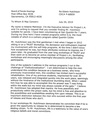
|
2019 aug 26
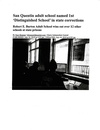
|
2019 aug 9
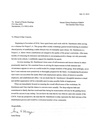
|
2019 jul 13

|
2019 jul 13

|
2019 jun 24
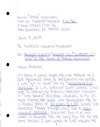
|
More... |
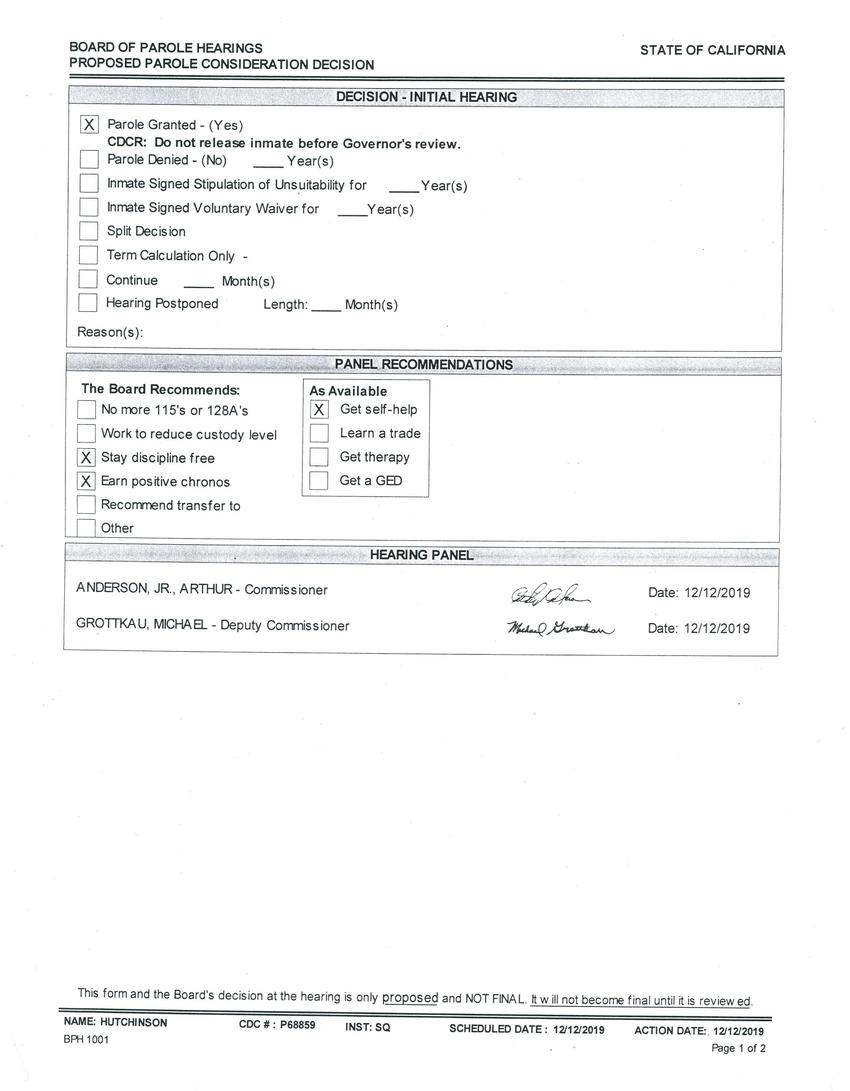
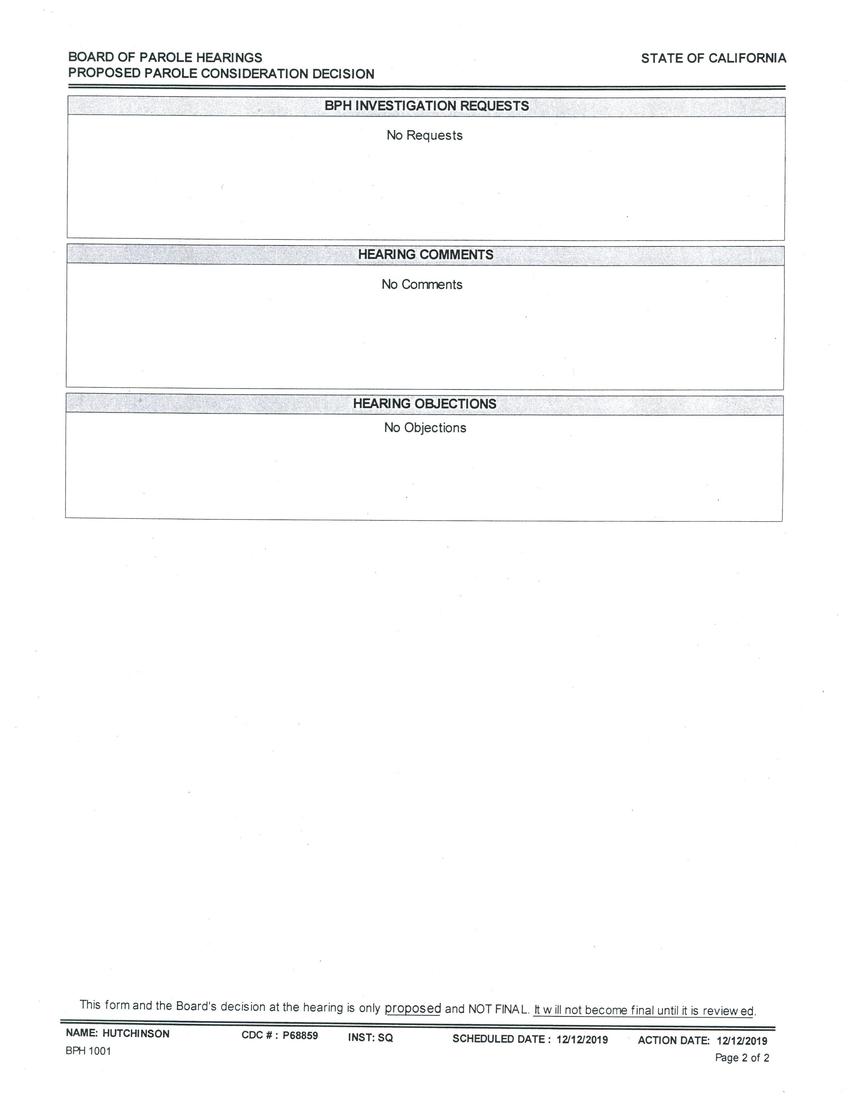
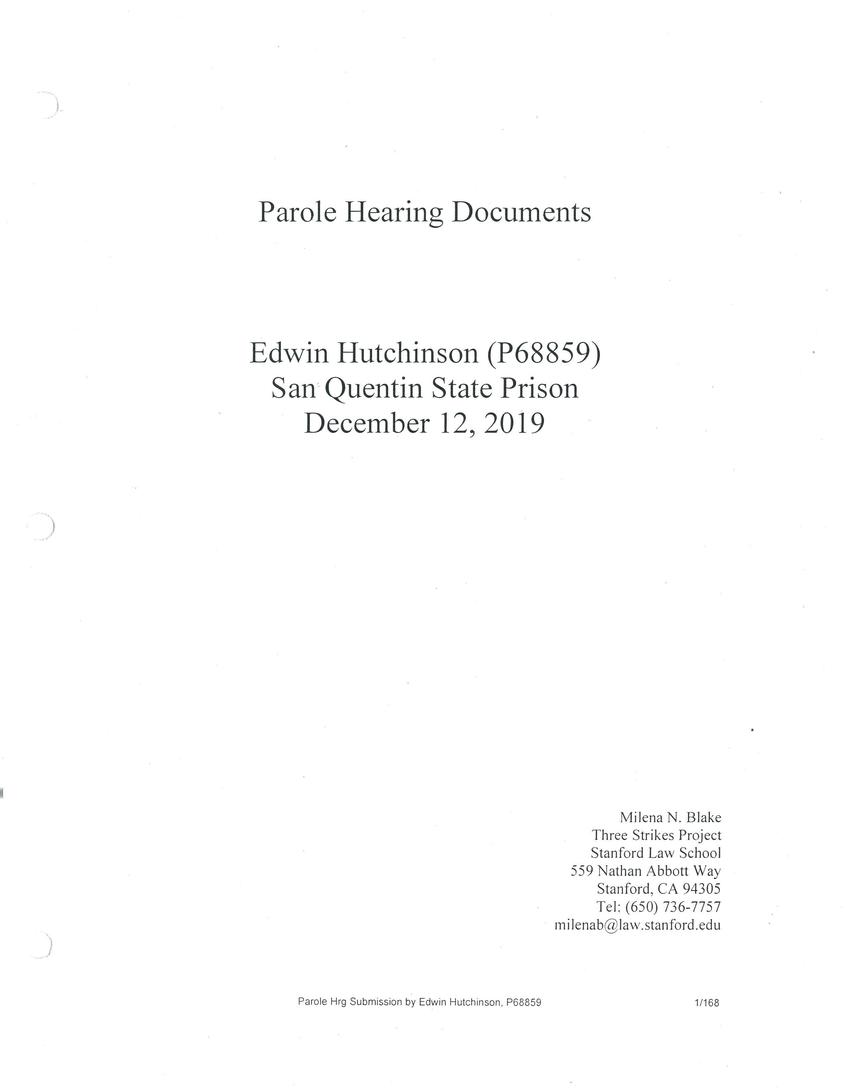
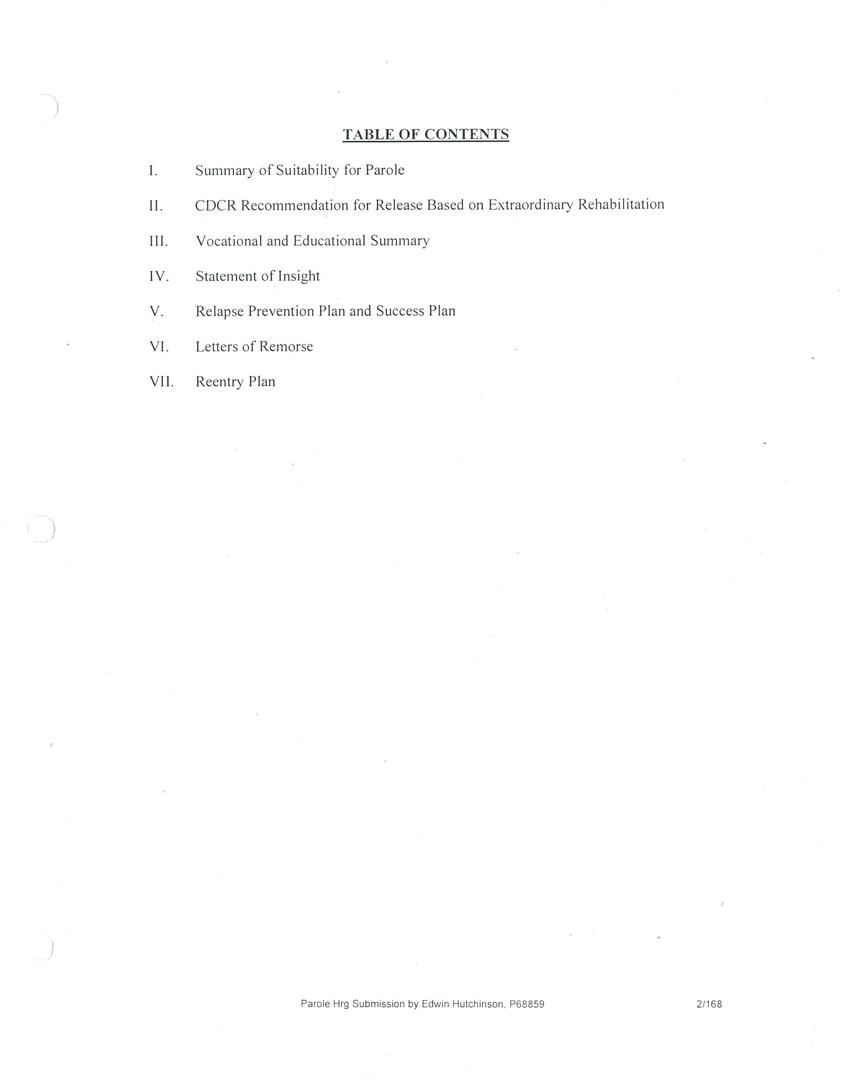
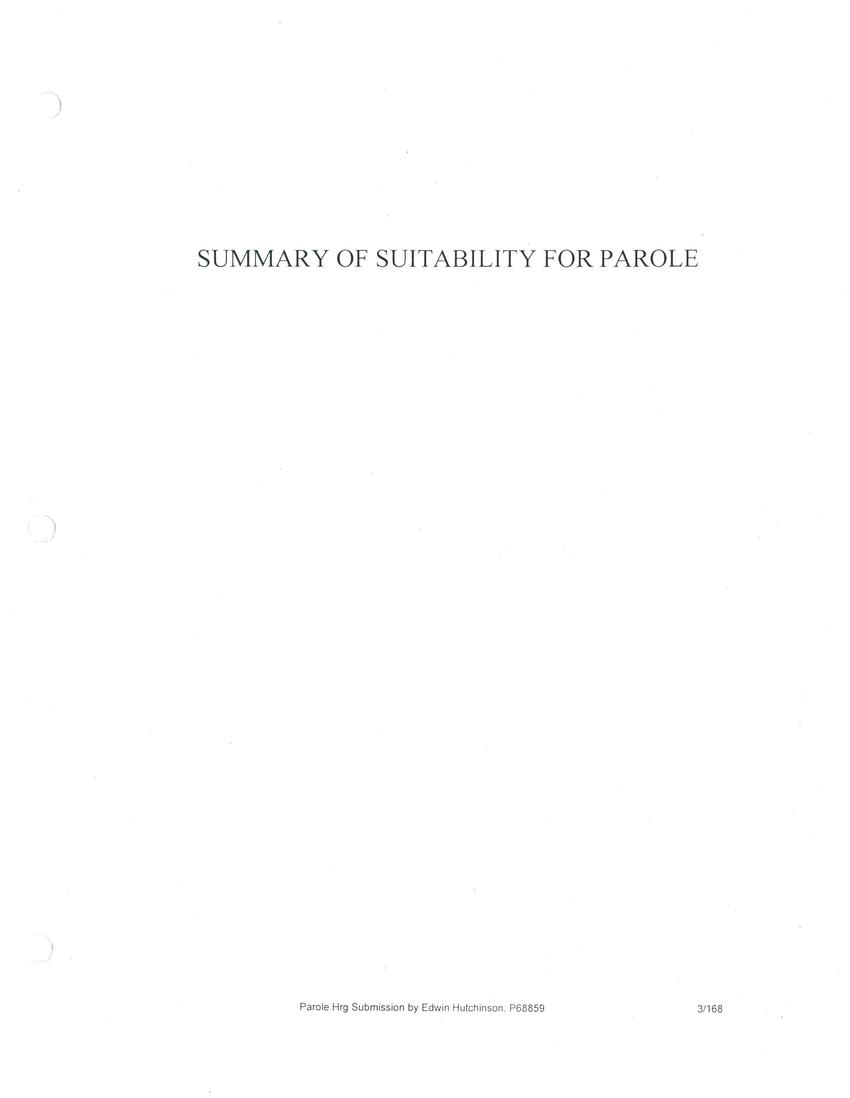
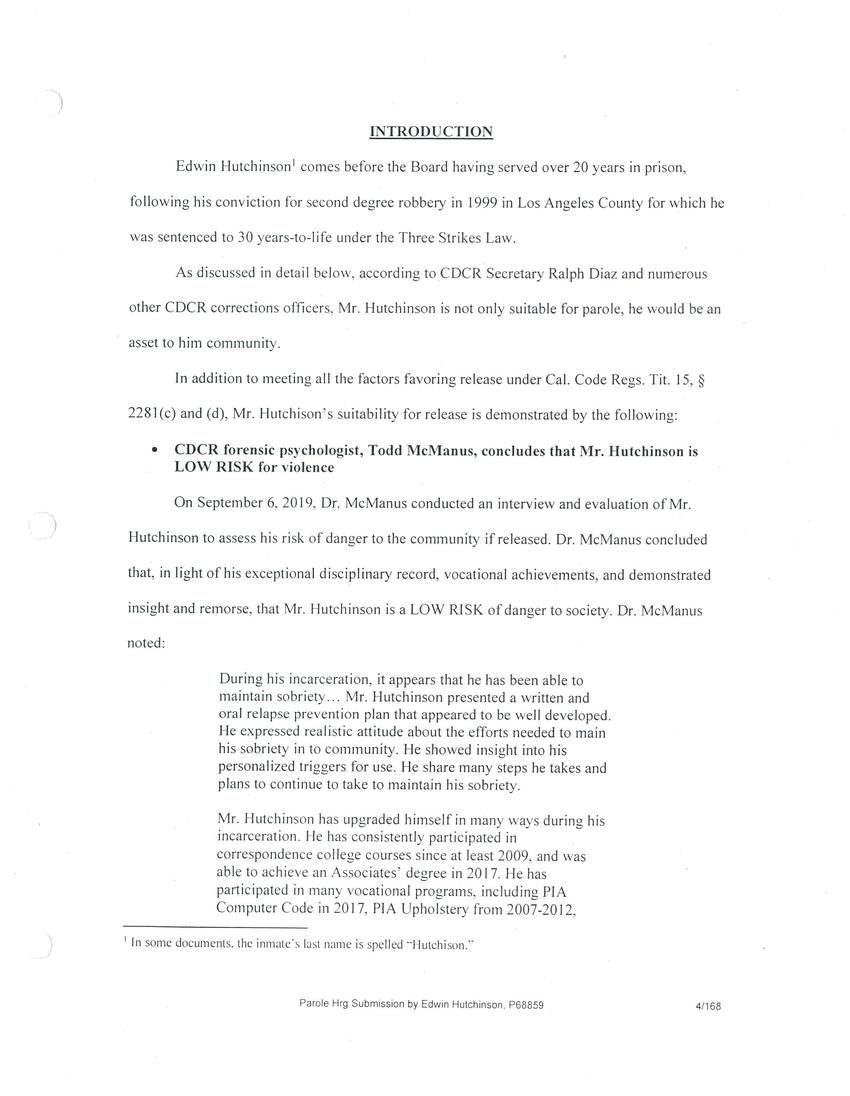

Replies